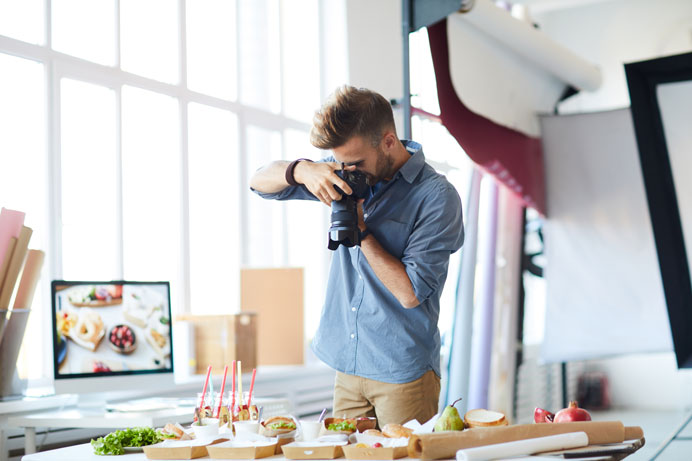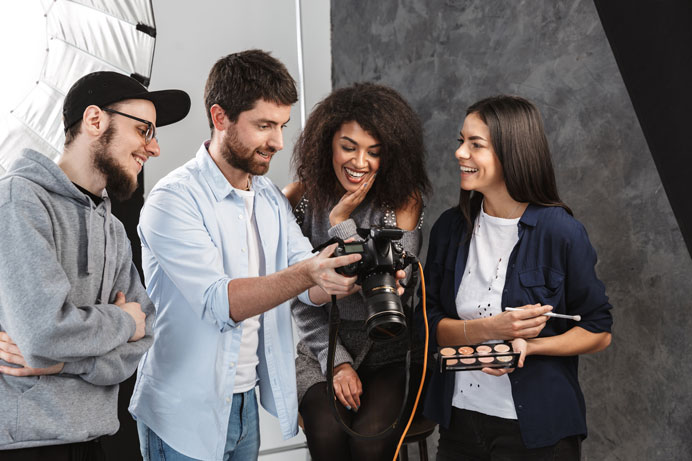Whether you’re creating an advertisement, revising a website, a new menu, or a brochure, images play a big role in the final product. As humans, we are visual creatures and conveying your message through a photo can help make yourself clear, as well as potentially boosting sales. A good photo doesn’t just happen.
However; there is a lot of preparation and vision that goes into creating a quality image, especially when it is an outdoor shoot that needs to take the elements into account. Here are our 5 things we discovered to consider when planning a photoshoot.
Step 1: Think Ahead While Planning Your Shoot
There are a lot of things to consider when you’re trying to set up a photoshoot, but there will always be some things that are out of your control. For example, you may need to be flexible with the weather if your photoshoot depends on being outside. In one of our shoots, we had a wet spell delay our shoot for five weeks.
Because of this, you always need to give yourself extra time so you aren’t racing to meet a deadline. If a project is due Friday, it may be difficult to achieve a flawless photoshoot the day before.
You need to give yourself extra room in the deadline for changes to schedules and the unexpected like technical difficulties. It’s also important to consider how your photo will be used, the dimensions your final photo will be, and what mediums it will be used for.
Step 2: Consider the Location
When you’re having a photoshoot at a new location, we always suggest visiting the site ahead of time to check out the layout and prepare anything that you may need in advance. In a recent overhead shot, we spent several weeks visiting potential locations, as the area and height were important factors in planning our shoot.
Knowing the environment gives you the best information for decision making when it comes to various photos that you would like. If you’re planning to shoot at a place that is on private property, make sure you have expressed permission to take photos.

Step 3: Create a Photography Brief
If you are hiring a photographer to take photos for you, creating a photography brief is the way to get what you want out of your shoot and set expectations for your photographer. We often recommend this to our clients as an important first step. Besides basic information like the time and date the photoshoot is taking place, the location, etc., your brief should explain what your overall message is in the photos.
You want to let the photographer know what your message is so they can communicate and capture that essence in the photos. We even have drilled down as far as detailing the outfits and color scheme for the photoshoot as well as certain shots that are a must. It’s also recommended to create a wants vs. needs list to gather your thoughts on paper and convey this to your photographer.
Step 4: Consider Your Budget
While this isn’t the most fun part of a photoshoot, taking your budget into consideration is an important step. This will play a part with your wants vs needs list, and making sure you have enough budget to complete the necessary photos, and utilizing the remaining budget for any of the extra images. You also need to keep in mind the costs you’ll have for equipment, photographer costs, props, and any costs you may have for the mediums and usages of images.
One thing that is often overlooked is usage rights. Even though a photographer may be paid for the time they spend during a photoshoot, the usage rights to the images they create are a necessary cost in budgeting. This usage right is essentially a way to lease the images that are taken for you for your commercial use and is an important agreement.
Step 5: Do Your Prep Work
The overall trend you may be seeing across this list is planning in advance is key, and that includes doing all of your prep work so you’re prepared. If you have people in the photos you’re shooting, make sure they are dressed appropriately for what you need, and that the shoot takes place on a day that the weather cooperates to convey the mood of the images you need.
For example, you wouldn’t want to take pictures for a swimwear line on a gloomy, rainy day. You’ll need to make sure you have a conversation with everyone who is involved so the information is clear and everyone is on the same page. Also, make a list to ensure you have all of the necessary equipment to get the job done.
On the creative side, you’ll want to know the dimensions of the final shots you need and to take some practice pictures. These steps all help refine your idea so the big day of the photoshoot goes smoothly.

Final Thoughts
If you take all of these things into consideration and plan ahead, your photoshoot should go smoothly, giving you the best final product possible. The extra effort put into creating wonderful images will help you in the long run, increasing the effectiveness of your messages to your target audience.
Related IH Concepts Articles
“Awesome Tips for Great Food Photography: Follow These and Bring in Customers”
https://www.ihconceptsonline.com/awesomefoodphototips/
“The Rules of Deciding Whether to Use Custom vs Stock Photography”
https://www.ihconceptsonline.com/stockvscustomphotography/


